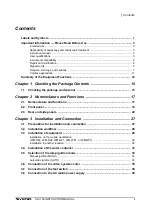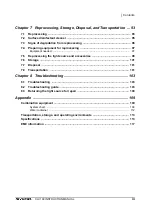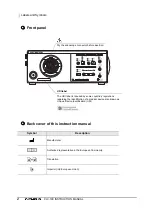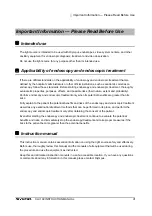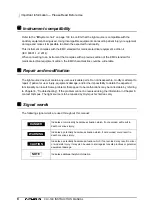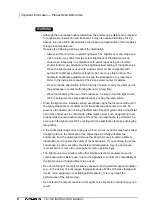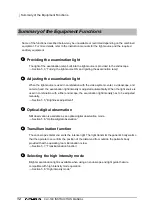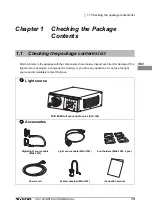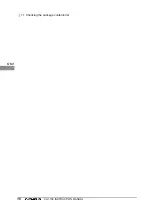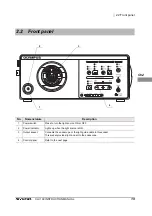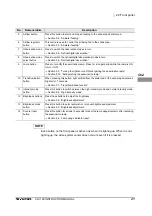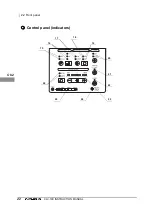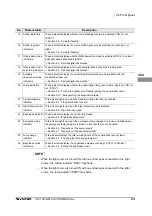
8
Important Information — Please Read Before Use
CLV-190 INSTRUCTION MANUAL
WARNING
• Although the examination light emitted from the endoscope’s distal end is required
for endoscopic observation and treatment, it may also cause alteration of living
tissues, such as protein denaturation of liver tissue and perforation of the intestines
through inappropriate use.
Observe the following warnings about the illumination.
−
Always set the minimum required brightness. The brightness of the image on a
video monitor may differ from the actual brightness at the distal end of an
endoscope. Especially in combination with endoscopes using an electrical
shutter function, pay attention to the brightness level setting of the light source.
When the light source is used with a video system center compatible with
automatic brightness adjustment function, be sure to use this function. The
automatic brightness adjustment can keep the illumination at a proper level.
Refer to the instruction manual for the video system center for details.
−
Do not continue observation in the proximity of tissue or keep the distal end of
the endoscope in contact with living tissue for a long time.
−
When discontinuing the use of the endoscope, be sure to turn the light source
OFF or extinguish the examination lamp by pushing the lamp button.
• Since the light source irradiates strong examination light, the disconnected end of
the light guide cable or the distal end of the endoscope becomes very hot. To
prevent a fire hazard, do not bring the distal end of the light guide cable or the distal
end of the endoscope in contact with a flammable object, such as operating room
drapes while the examination lamp is ON. When no examination is performed, be
sure to turn the light source OFF or extinguish the examination lamp by pushing the
lamp button.
• If the endoscopic image dims during use, blood, mucus, or debris may have soiled
the light guide on the distal end of the endoscope. Carefully withdraw the
endoscope from the patient and remove the blood or mucus to obtain optimum
illumination and to ensure the safety of the examination. If you continue to use the
endoscope in such a condition, the distal end temperature may rise and cause
mucosal burns. It may also cause patient and/or operator injury.
• The light source may interfere with other medical electronic equipment used in
combination with it. Before use, refer to the Appendix to confirm the compatibility of
the light source with all equipment to be used.
• Do not use the light source in locations exposed to strong electromagnetic radiation
(e.g., in the vicinity of a microwave therapeutic device, MRI, short-wave therapeutic
device, radio equipment, or cellular/portable phone). This may impair the
performance of the light source.
• Do not touch the output connector of the light source. Operator or patient injury can
result.
Summary of Contents for EVIS EXERA III
Page 2: ......
Page 6: ...iv Contents CLV 190 INSTRUCTION MANUAL...
Page 20: ...14 Summary of the Equipment Functions CLV 190 INSTRUCTION MANUAL...
Page 22: ...16 1 1 Checking the package contents list CLV 190 INSTRUCTION MANUAL Ch 1...
Page 32: ...26 2 3 Rear and side panels CLV 190 INSTRUCTION MANUAL Ch 2...
Page 98: ...92 6 4 Lamp usage indicator reset CLV 190 INSTRUCTION MANUAL Ch 6...
Page 108: ...102 7 8 Transportation CLV 190 INSTRUCTION MANUAL Ch 7...



